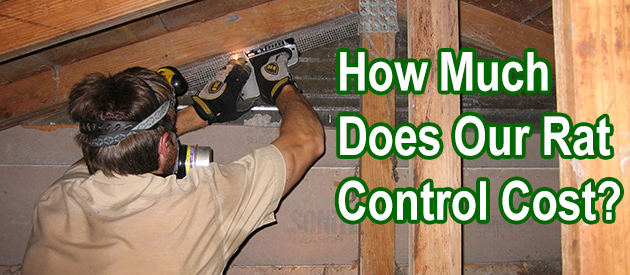Baltimore City County, Baltimore Rat Control Situation:
Hi There. I just saw your website.... and i'm wondering if you wouldnt mind answering a couple questions for me. We live in Baltimore... We had a rat come in through our dryer vent (we've since had it replaced with one with a flap) and it made a little "home" in the laundry room. anyhow...that one was "caught" and disposed of. Being afraid there may be others in teh house....I put out some traps. My question is....one trap went off the other day...well i noticed it this morning...I didnt hear it or anything. Anyhow...the trap went off and the peanut butter was "flat" but showed no signs of "gnawing" or teeth in the PB that was remaining. The trap was set behind our hall stand and the stand may have been pushed into it by accident. Do you know if this would cause th rat trap to go off? or would the "trigger" have to be touched? Also, would there be "teeth" marks in the PB if it WAS a rat? Oh and the reason I wondered is that I found 4 droppings under the couch the other day (the other rat was disposed of about a week or so ago) and the droppings were brown. Do you know if the droppings woudl still be brown after a week as I wonder if it went under the couch and then back into the laundry room, which is just off the living room. And wonder if those droppings are "old". I have found NO other droppings to date. I'm guessing they would drop wherever they go vs just in a nest right? Thanks so much in advance!!!
Baltimore Rat Control Tip of The Week
Black Rat Biology
The black rat (Rates Rattus) has likewise been known as a ship rat, rooftop rat, and old English rat, among other names. It is a long-tailed rodent that is native to Asia. However, it is found in practically all parts of the world today. Black rats prefer hotter zones, however, are profoundly versatile, and will look for cover in natural (woods) and unnatural (homes and structures) areas. It is bigger and more aggressive than its brown-colored cousin, but is more vulnerable to cold and has a more constrained diet. Black rats are generally omnivores. They are a genuine threat to ranchers since they will eat a wide scope of farming harvests, seeds, and feed. A large population of black rats can decimate a field of crops, or contaminate a barn full of feed and hay.
A common black rat is 5.02-7.19 in long, including its tail, and weights 4.12 oz. when fully grown. Notwithstanding its name, the black rat is normally not black. Its coat is typically extremely dark brown. In the wild, black rats want to settle in burrows made using the ground litter (leaves, twigs, etc.) found on timberland floors. In urban settings, they like attics and upper floors of structures, making homes from discovered litter, destroyed paper, and insulation.
They are also tasty meals for coyotes, wild dogs, and other predator winged animals. These obtrusive pests are difficult to dispose of once they move in. Talk with your neighborhood experts on approaches to shield your home from being overrun. Keeping your yard free of clutter, yard debris, standing water, and trash will deter them. You should keep all garbage in fixed holders, and pick up outside pet food and feed. Routinely check your home and building for cracks and openings that would give black rats a path to your home. Black rats are keener on living in their normal habitat than in your home; however, they will consistently exploit food, water, and safe shelter.


